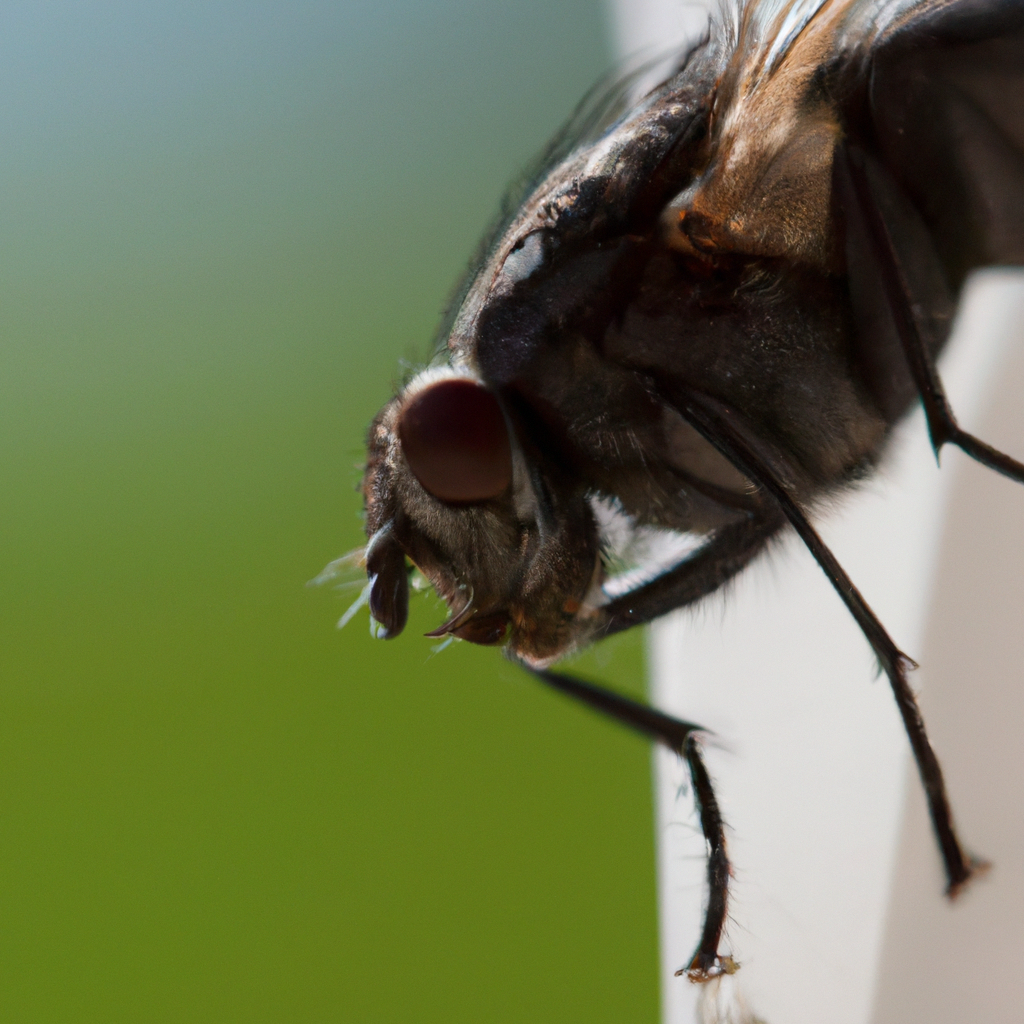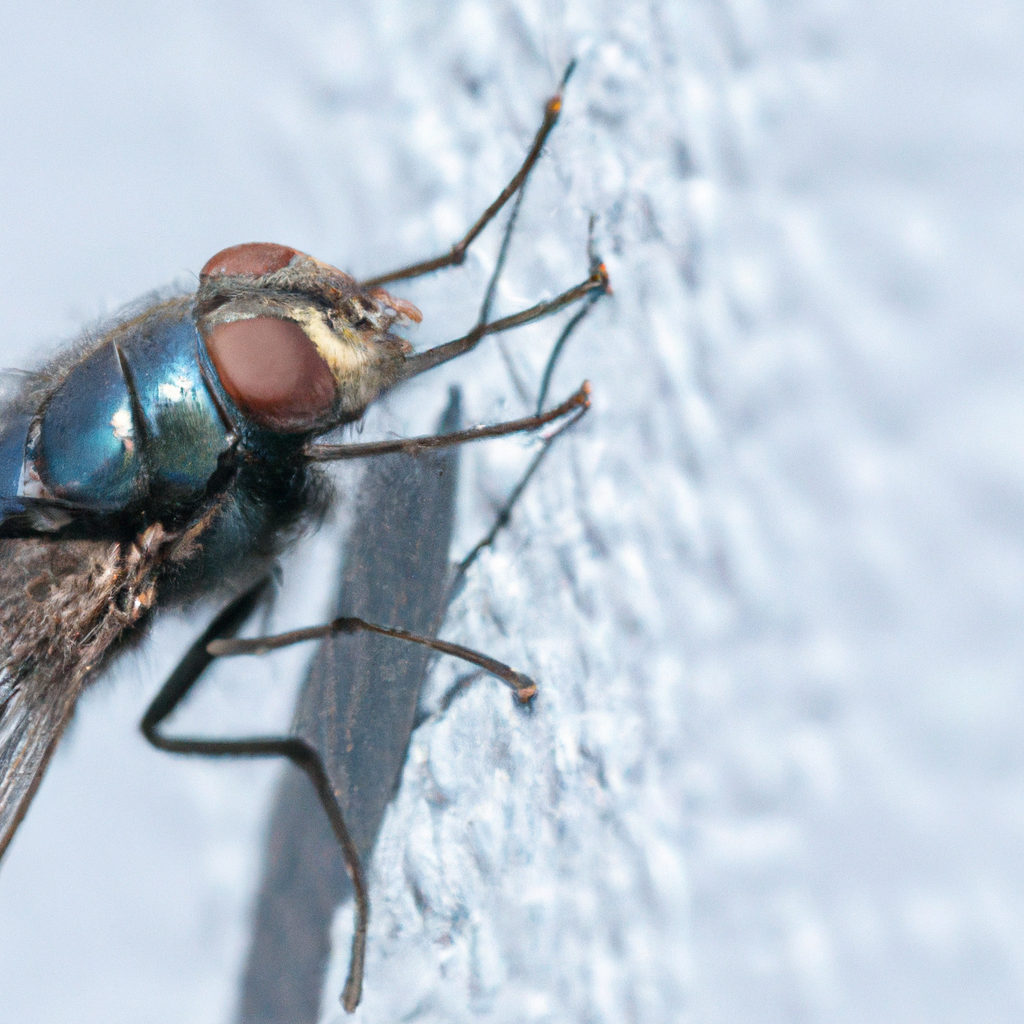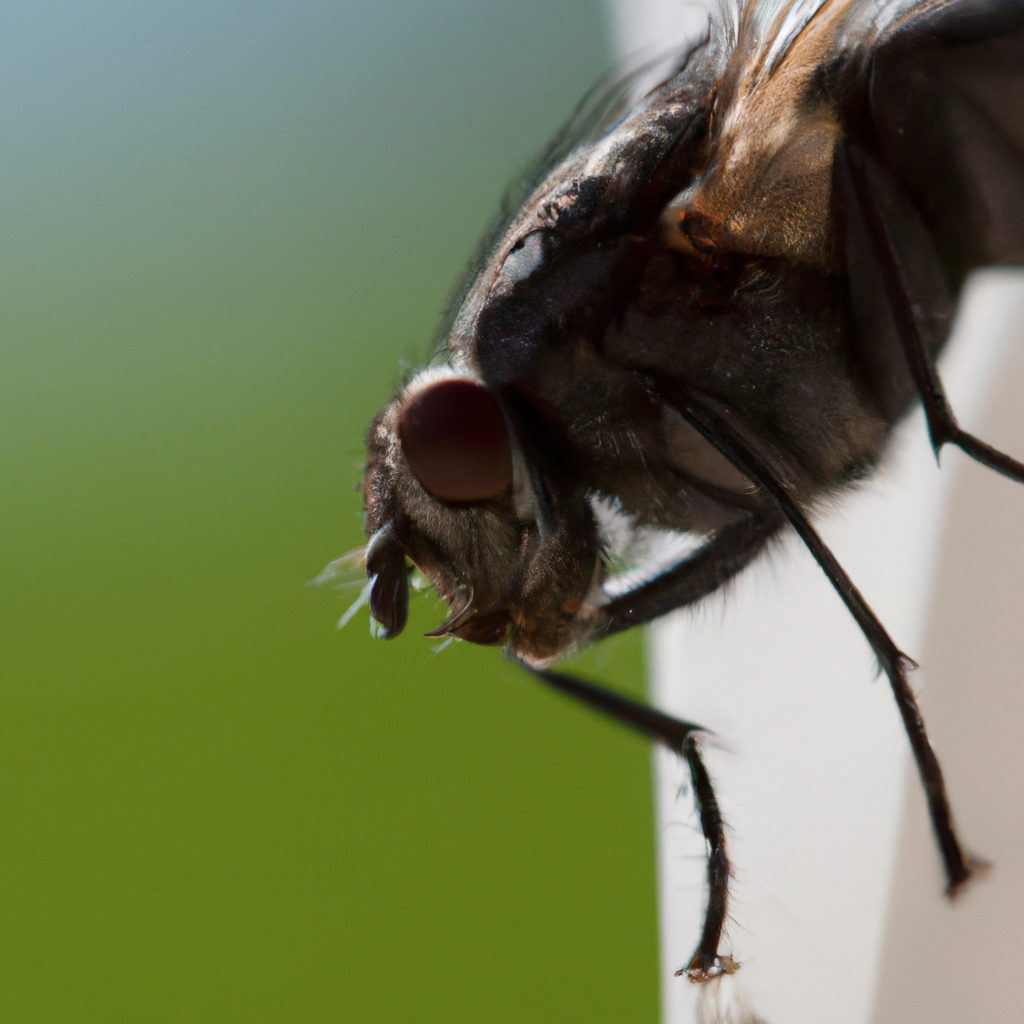Do you ever find yourself wondering why flies are always drawn to your house? It can be quite frustrating, constantly swatting and shooing them away. In this article, we will explore the reasons behind the attraction of flies to your house. From the enticing smells to potential breeding grounds, we will uncover the secrets that make your humble abode so irresistible to these pesky winged creatures. So, sit back, relax, and prepare to gain a deeper understanding of the allure that flies find in your home.

Understanding the Attraction of Flies to Your House
Flies are a common nuisance that can quickly become a source of annoyance and discomfort in your home. Understanding the factors that attract flies to your house is crucial in preventing infestations and maintaining a clean and healthy living environment. By gaining insight into their behaviors and preferences, you can take proactive measures to minimize their presence and reduce the health risks associated with these pesky insects.
Importance of Understanding Fly Attraction
Comprehending the reasons why flies are attracted to your house serves a twofold purpose: preventing infestations and reducing annoyance and discomfort. Flies are not only bothersome creatures buzzing around; they also pose health risks by transmitting diseases and contaminating food. By understanding their attraction, you can implement effective preventive measures, such as eliminating their breeding grounds and creating an environment that is less appealing to these pests.
Common Areas Where Flies Are Found
Flies can be found in various areas of your house, both indoors and outdoors, as well as transitional zones where the two meet. Identifying these common areas is essential in targeting your efforts to control their presence and minimize their impact on your daily life.
Indoor Areas
Indoors, flies tend to congregate in spaces where food is available, such as kitchens, dining areas, and garbage disposal areas. They are often attracted to decaying organic matter, including fruit and vegetable scraps, as well as moist environments like sink drains or standing water.
Outdoor Areas
In outdoor areas, flies are commonly found near garbage bins, compost heaps, and animal waste. They are drawn to the scent of decaying organic matter and the moisture from rain or sprinkler systems. Flies can also be found near outdoor dining areas, where food is present.
Transitional Zones
Transitional zones between indoor and outdoor areas, such as open doorways or windows, are prime entry points for flies. They can easily fly into your house when these access points are left open, especially if there are attractive odors or food sources nearby.
Factors that Attract Flies
Several factors contribute to the attraction of flies to your house. Understanding these factors will allow you to modify your environment to make it less appealing to these pests.
Availability of Food Sources
One of the primary reasons flies are attracted to your house is the availability of food sources. Flies are voracious eaters and are attracted to both fresh and decaying organic matter. They often seek out food residues, crumbs, or spilled liquids that are easily accessible.
Decaying Organic Matter
Flies are particularly drawn to decaying organic matter, such as fruits, vegetables, and animal waste. The odor emitted by decomposing food acts as a powerful signal, attracting flies to its location.
Garbage and Waste
Garbage bins and waste areas are a magnet for flies. The combination of decaying food, moisture, and warmth found in these areas provides an ideal breeding ground for flies. Proper waste management, including sealing garbage bags tightly and regularly emptying bins, is essential in discouraging fly infestations.
Moisture and Standing Water
Flies are also attracted to moisture and standing water. Breeding sites such as leaky pipes, clogged drains, or stagnant water sources like bird baths or puddles can attract flies. By addressing these sources of moisture, you can significantly reduce the risk of fly infestations.

Role of Odors and Scents
Flies have a highly developed sense of smell, which plays a crucial role in their attraction to specific scents and odors. Understanding the relationship between flies and odors can aid in your efforts to create an environment that repels rather than attracts them.
Sense of Smell in Flies
Flies possess a unique olfactory system that allows them to detect and distinguish various odors present in their surroundings. This sense of smell enables them to locate potential food sources and breeding sites.
Chemical Signals
Food odors, chemical compounds, and scents act as chemical signals that attract flies. Flies are particularly sensitive to certain chemicals emitted by decomposing organic matter, feces, and sweat, which serve as indicators of possible food sources.
Attractive Scents
Flies are attracted to a variety of scents commonly found in households. Rotten food and organic waste, feces and animal droppings, sweat and body odor, fermenting fruits and vegetables, as well as stagnant water and sewage, are all scents that can lure flies to your house.
Types of Odors that Attract Flies
Understanding the specific odors that attract flies is crucial in implementing effective preventive measures. By minimizing or eliminating these odors, you can make your house less appealing to flies.
Rotten Food and Organic Waste
The smell of rotten food and decaying organic waste is highly attractive to flies. It signals the presence of a potential food source and acts as a beacon for these pests. To reduce fly attraction, promptly dispose of spoiled food and keep garbage bins tightly sealed.
Feces and Animal Droppings
Flies are strongly attracted to the odor of feces and animal droppings. The scent of these excrements serves as a potent signal for flies, indicating the presence of nutrient-rich organic matter. Regularly clean up after pets and maintain proper hygiene in areas susceptible to animal droppings.
Sweat and Body Odor
Human sweat and body odor can also attract flies. The metabolic byproducts and chemical compounds present in sweat act as appealing scents for flies. Minimize the attraction by practicing good personal hygiene and regularly cleaning areas prone to perspiration.
Fermenting Fruits and Vegetables
The fermentation process of fruits and vegetables produces scents that are highly attractive to flies. Overripe or rotting produce should be discarded promptly, and fruit bowls or compost bins should be kept covered to reduce fly attraction.
Stagnant Water and Sewage
Stagnant water and sewage emit odors that can entice flies. Ensuring proper drainage, emptying standing water sources, and maintaining a well-functioning sewage system can help minimize the appeal of your house to flies.
Understanding Fly Vision
Flies possess compound eyes that allow them to see their surroundings in a unique way. Understanding the visual preferences and capabilities of flies can assist in creating an environment that is less attractive to them.
Compound Eyes of Flies
Flies have compound eyes, consisting of thousands of individual lenses, which provide them with a wide field of view. This visual structure allows flies to detect movement and changes in light, which are essential for their survival and navigation.
Detecting Movement and Light
Flies are highly sensitive to movement, making them attracted to areas where movement is frequent and pronounced. Open doorways, windows, or areas with significant human or animal activity can catch their attention. Additionally, flies are also drawn to areas with contrasting light levels, such as bright areas against dark backgrounds.
Visual Preferences of Flies
Despite having excellent motion detection, flies have limited visual acuity. They are better at detecting large, moving objects rather than fine details. Therefore, creating an environment with minimal movement and reducing contrasting light levels can help reduce fly attraction.
Colors that Attract Flies
Flies have a preference for certain colors due to their visual capabilities. Understanding these color preferences can aid in creating an environment that is less appealing to flies.
Bright and Shiny Surfaces
Flies are attracted to bright and shiny surfaces due to their ability to reflect and amplify light. These surfaces can act as beacons, catching the attention of flies and drawing them in.
Ultraviolet Colors
Flies are highly attracted to ultraviolet (UV) colors. Certain flowers and objects, such as UV reflective traps or flypapers, can exploit this preference to attract flies and trap them. Avoid using or displaying objects with UV colors to discourage fly attraction.
Contrasting Shades
Flies are more likely to be attracted to areas with contrasting shades. Dark objects or surfaces against a lighter background can catch their attention. By reducing the presence of contrasting shades, you can make your environment less attractive to flies.
Importance of Natural Light
Natural light plays a significant role in fly behavior and can be utilized to control their presence in your house. Understanding the relationship between flies and sunlight can aid in your preventive efforts.
Fly Behavior and Sunlight
Flies are diurnal insects, meaning they are most active during daylight hours. They are attracted to well-lit areas and are more likely to be found near windows and other light sources. By utilizing natural light, you can draw flies away from interior spaces.
Utilizing Sunlight for Control
Strategically placing fly traps or sticky tapes near windows can take advantage of flies’ attraction to sunlight. The combination of natural light and the allure of the trap or tape can prove effective in capturing and controlling fly populations.
Other Environmental Factors
Apart from the specific factors discussed, several other environmental aspects can contribute to fly attraction. Understanding these factors can help you address potential issues and minimize the presence of flies in your house.
Presence of Other Insects
The presence of other insects, such as fruit flies or houseflies, can attract flies to your house. Flies often gather where there are abundant food sources. By addressing other insect infestations, you can reduce fly attraction.
Availability of Breeding Sites
Flies require suitable breeding sites to reproduce and thrive. Proper sanitation and regular cleaning, particularly in areas prone to moisture or organic waste accumulation, can reduce fly breeding opportunities and consequently minimize infestations.
Access into the House
Flies can easily enter your house through open doors, windows, or small cracks and gaps. Ensuring that these entry points are properly sealed or screened can help prevent fly intrusion and reduce their presence inside your home.
Exterior Landscaping
Certain landscaping features, such as water features or overly dense foliage, can create an environment that is attractive to flies. Regular maintenance of your garden, removing stagnant water sources, and keeping foliage trimmed can discourage fly attraction.
By taking the time to understand the attraction of flies to your house, you can effectively implement preventive measures, reduce the risks they pose to your health, and minimize the annoyance and discomfort they bring. Through proper sanitation practices, addressing potential attractants, and utilizing natural light, you can create an environment that is less appealing to flies, thereby fostering a cleaner and healthier living space for you and your family.




